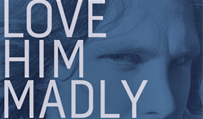Throughout these tumultuous times for the music industry, one thing has remained constant––the lucrative fees in broadcast and film licensing. These fees can range anywhere from hundreds of dollars to tens of thousands of dollars and, in some cases, additional reuse fees. To get your music placed, it really comes down to hitting the pavement, shaking hands and making phone calls to build contacts. Here’s what’s working for me….
1. Use Resource Guides
I’ve always found that resource guides are a good place to start making connections. Having more than one guide or directory is even better––you can cross-reference them. The Music Registry publishes a host of reference guides for the music industry, like the Film & Television Music Guide and the Music Publisher Registry. They were one of the first companies to tackle this type of directory for TV & Film music contacts back in the early ‘90s. What is most impressive about this guide is that it carries pertinent information about music supervisors, music editors, music departments, etc. There are other resources, too, like the Hollywood Creative Directory, 411 Directories and the Blu-Book Directory that are available, but The Music Business Registry is still the most thorough of its kind. And do not forget that Music Connection is well known for its guides and directories, always updated annually.
2. Do Your Homework
Once you have a list of contacts to approach, make sure your music is appropriate to submit to these particular contacts. Meaning, if you are a pop vocalist, be sure that these people you are contacting actually license vocal music and not just 60-second promo instrumental music or blues. The best way to research this is to first watch the shows in question and make note of their likes and styles, so when you contact them you sound well informed. Also before making cold calls, try to get a referral from someone they know. How do you do that? If the contact person is not able to use your music, ALWAYS ask them who they can recommend! If they are able to give you a name, then you know you can use that person’s name for a referral to make the new contact. Keep a details log as well. Write down the date you spoke to a contact and any other pertinent information, such as, “told me to call back in June 2012 to follow up for new show.”
3. Build A Catalog
Product, that’s what you need! When you start shopping your music for licensing possibilities, have at least a CD’s worth of material. It seems fruitless when people shop only one song to a music supervisor, unless it’s a huge hit from an artist that everyone knows, like Lady Gaga. Sure there is always a possibility that one song could be perfect for a scene and they could license it, but if you are going to all this trouble in contacting people, it just makes better sense to have a number of tracks to shop to get a fighting chance. Especially in today’s digital revolution, you can put tons of music on thumb drives and mail it off.
4. Pick The Right Contacts
It will save a lot of time if you make preliminary calls to the music departments to see if they, in fact, license music from outside contributors. Certain companies have exclusive licenses with music libraries and are restricted in using outside sources. Also there are certain shows that don’t license outside music and only use one music composer for the show. Please keep in mind that a lot of your success is determined by timing and whether a show needs your type of music.
When speaking with the music supervisor always try to see what kind of music they may need in upcoming episodes, and attempt to get a gauge on what their future licensing needs are, inquire if they are developing other projects––if they can’t use one of your songs now, they may be able to use it in the future.














